#khawla b. al-azwar
Photo
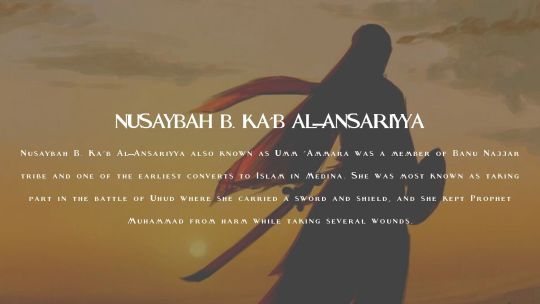
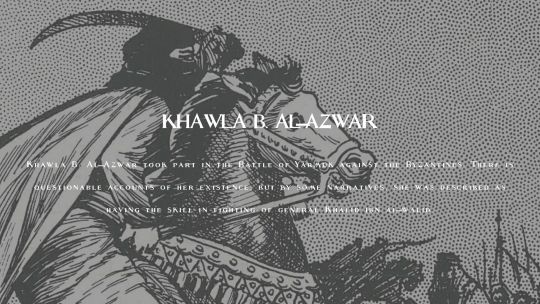

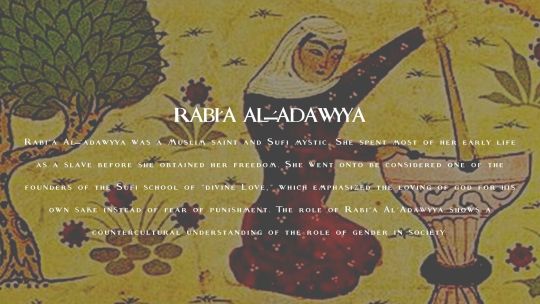
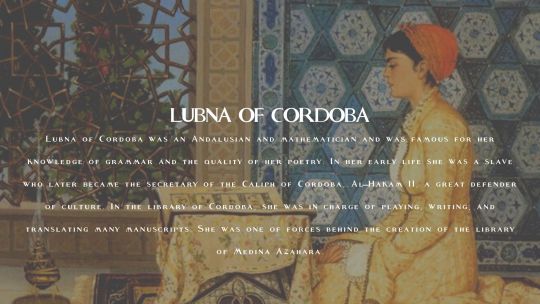

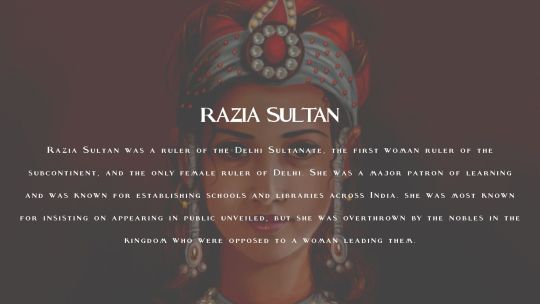

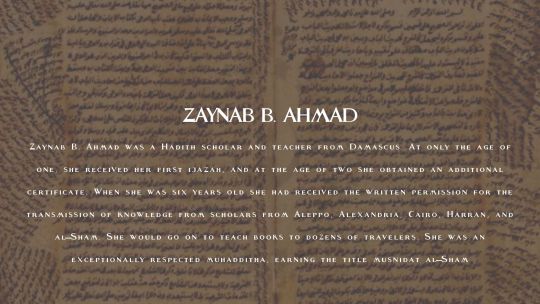
history | women throughout history | muslim women
#but here it is\another addition to the series#history#powerful women#muslim women#nusaybah b. ka'b al-ansariyya#khawla b. al-azwar#'aisha b. abi bakr#rabi'a al-adawyya#lubna of cordoba#al-malika al-hurra arwa al-sulayhi#razia sultan#shajar al-durr#zaynab b. ahmad#myedit#mine#aesthetic#graphics#if there's mistakes let me know#women throughout history#theres 100% a typo but im way too tired to fix it
220 notes
·
View notes
Photo
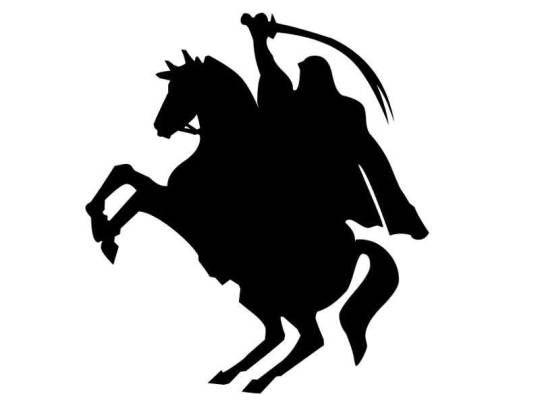
Kawlah bint Al-Azwar - The black knight
Kawlah bint Al-Azwar (active during the 7th century) was a Muslim warrior woman who fought against the Byzantine and notably rescued female captives. She also healed the wounded when she was not fighting.
Before detailing Kawlah’s military career, it is important to note the presence of other fighting women in the Arab world. One of the most famous was Nusayba bint Ka’ab also known as Umm Umarah who fought alongside the Prophet Muhammad. She entered the Battle of Uhud in 625, according to some accounts alongside her mother. She staunchly defended the Prophet during the fight. When an enemy warrior boasted that he would kill Muhammad, she cut through the ranks and struck him, complaining that “the enemy of God had two suits of armor”. Some reports also state that she lost an arm and suffered eleven wounds during this battle. She participated in a total of six battles during her lifetime.
Umm Sulaim and her sister Umm Haram bint Milhan also fought at Uhud. Umm Sulaim carried a dagger and reportedly said: “O Messenger of Allah! I carry the dagger so if any disbeliever approaches me, I will spilt his stomach open”. Another woman Umm AlDhouda bint Mas’ud fought so valiantly during the Battle of the Khaybar that the Prophet gave her the same share of the spoils as the male warriors. Safiya, the Prophet’s aunt, killed a spy with a tent peg while her terrified male guard stood crying. During a battle, she killed a warrior and threw his severed head into the enemy camp.
Martial women kept appearing after the Prophet’s death. His wife Āʾishah bint Abī Bakr lead troop during the Battle of the Camel in 656 while his granddaughter Zaynab bint Ali fought during the Battle of Karbala in 680. Umm Hakim single-handedly killed several Byzantine soldiers during the battle of Marj al-Saffar in 634 while a group of women reportedly fought at the Battle of Yarmouk in 637. A woman named Ghazala was also known for defeating general Al-Hajjaj ibn Yusuf in a duel.
Kawlah fought during a conflict between the Byzantine Empire and the Rashidun Caliphate (established in 632) which wanted to expend its territory deep into Syria. She was the daughter of a chief of the Bani Assad tribe and her family was quick to convert to Islam. Her older brother Dhiraar bin Al-Azwar taught her to fight and she was also a poet. Dhiraar served under general Khalid Ibn Al Walid, who conquered Byzantine Syria between 634 and 638.
Dhiraar was taken prisoner during the Battle of Ajnadayn in 634. Kawlah then rushed into the fray. Dressed as a male knight she “slashed the head of the Greeks”. Khalid and his troops watched her in awe, wondering who was this warrior dressed in black. After the battle, Khalid went to Kawlah and asked her who she was. She told him that she was one of the women following the army and that she fought because her brother was captured. Khalid ordered them to pursue the Byzantine army and Kawlah kept fighting to find her brother, ultimately freed him.
Kawlah was however captured in during another battle. She then realized that the Byzantine had attacked the women’s camp and taken several female captives. She decided to escape with the help of the other women. She reportedly said: “Do you accept these men as your masters? Are you willing for your children to be slaves? Where is your famed courage that has become the talk of the Arab tribes as well as the cities?”. One of the women then answered: “We are courageous and skillful as you describe. But in such cases a sword is quite useful and we were taken by surprise, unarmed”.
Kawlah then decided to use tent poles as weapons. The women fought their way to freedom, killing thirty Byzantine knights while Kawlah encouraged her with her verses. Khalid and his troops arrived to rescue the women. In the ensuing battle, Kawlah killed five knights including a leader that had insulted her.
In one of the next battles, Arab soldiers were overwhelmed by the Byzantines and many soldiers started to flee. Kawlah and the other women confronted the fugitives and she once again rose her sword to lead the counterattack.
Kawlah’s legacy lives on today. The first women military college in the United Arab Emirates was named after her and her name was also given to schools and associations.
References:
Ahmed Leila, Women and gender in Islam: Historical roots of a Modern debate
Bachay Judith B., Fernandez-Calienes Raul, Women moving forward vol.2
Cross Robin, Miles Rosalind, Hell Hath no Fury, true profiles of women at war from Antiquity to Iraq
Grant de Pauw Linda, Battle Cries and lullabies
Ma’n Abul Husn, Khawla Bint Al Azwar, the Islamic Heroine
Qazi Farhana, “The Mujahidaat, tracing the early female warriors of Islam”, in: Sjoberg Laura, Gentry Carol E., Women, gender and terrorism
#Kawlah bint Al-Azwar#Nusayba bint Ka’ab#Umm Umarah#Umm Sulaim#Umm Alexandra Dhouda Bint Mas’ud#Safiya#Āʾishah bint Abī Bakr#Zaynab bint Ali#Ghazala#Arab history#byzantine history#7th century#syria#muslim women#warrior women#women in history#history#women in war#badass women#military history#lady knights#women's history month
142 notes
·
View notes